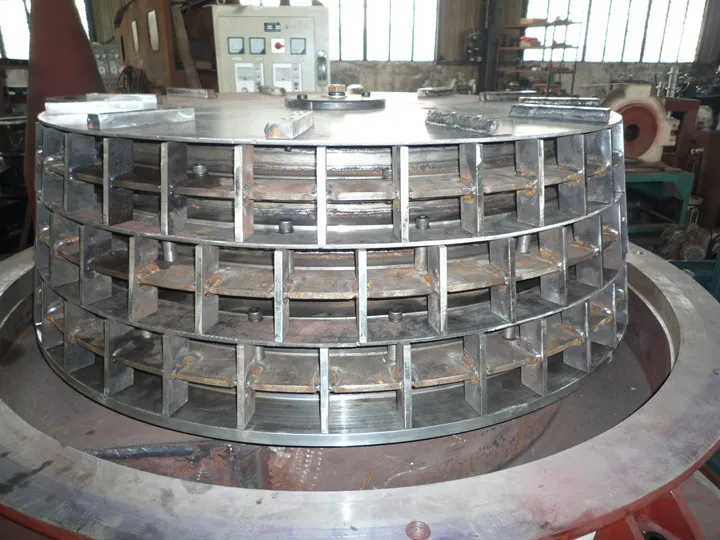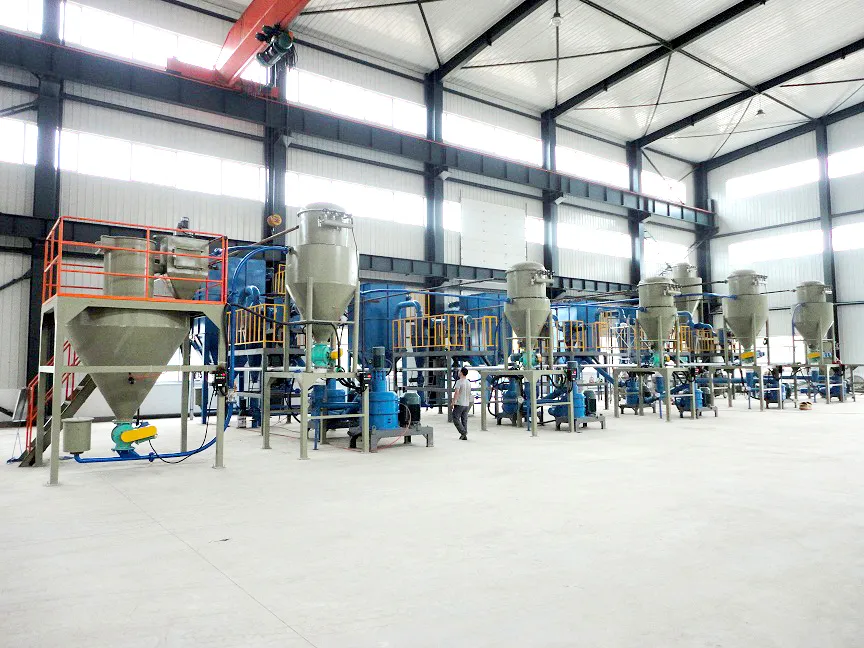Indledning
As we know, classifying wheel is the core component of air classifier mill. Its material directly affects the wear resistance, classification accuracy and application range of the equipment. This article will analyze the advantages and disadvantages of classifying wheel of different materials based on actual application scenarios. We would be honored if it could play a little role in optimizing your equipment efficiency and costs.
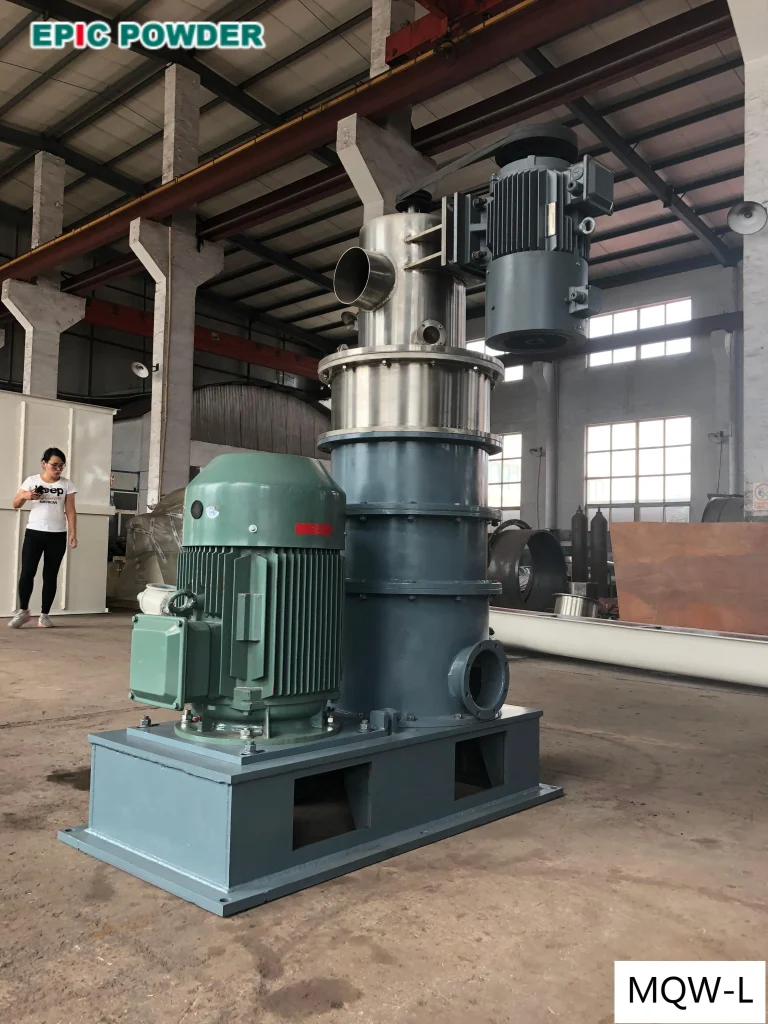
Function and material requirements of classifying wheel
Classifying wheel is the “heart” of air classifier mill. It achieves precise separation of particles through high-speed rotation, and its material should meet the following key properties:
High wear resistance: Resist material impact and friction, extending service life.
High-precision classification: High surface finish, to reduce particle agglomeration and improve control accuracy of particle size.
Chemical stability: Strong corrosion resistance, to avoid material contamination.
Mechanical strength: Withstand centrifugal force of high-speed rotation (speed can reach 6000rpm).
Mainstream materials and application analysis
1. Zirconia (ZrO₂)
Funktioner
· Hardness HRA 88-90, wear resistance is 3-5 times that of alumina.
· Density 6.0g/cm³, excellent impact resistance.
· Strong chemical inertness, no risk of metal contamination.
· High cost (about 3-5 times that of alumina).
Typical applications
– Lithium battery materials: High-precision classification of ternary precursors and lithium iron phosphate (D97≤5μm).
– Electronic ceramics: Ultra-fine classification of alumina substrates and MLCC dielectric materials.
– Medicine and food: Materials with high purity requirements, such as antibiotics og stivelse.
2. Alumina (Al₂O₃)
Funktioner
· Hardness HRA 85-87, medium wear resistance.
· Density 3.8g/cm³, high thermal conductivity (30W/(m・K)).
· Low cost (about 1/3 of zirconia).
· High temperature resistance ≤1600℃.
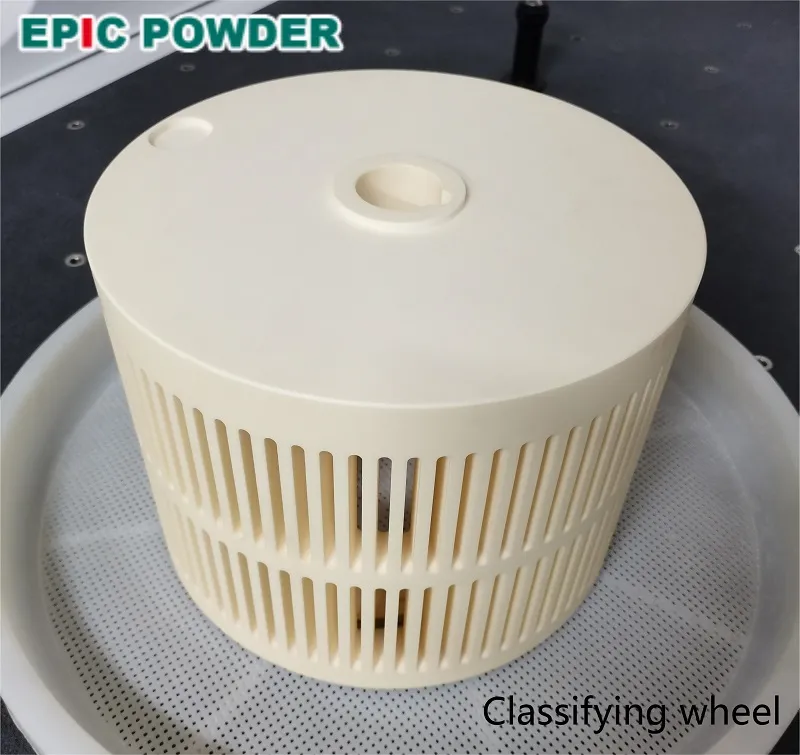
Typical applications
– Ceramic raw materials: Large-scale classification of feldspar and quartz sand.
– Building materials industry: Conventional particle size control of cement and refractory materials.
– Heat dissipation components: Efficient heat dissipation requirements of electronic substrates.
3. Silicon Carbide (SiC)
Funktioner
· Hardness HRA 90-92, highest wear resistance.
· Density 3.2g/cm³, excellent corrosion resistance.
· Extremely high cost (about 5-8 times that of zirconium oxide).
Typical applications
– Super-hard materials: Grinding and grading of diamond and corundum.
– Special fields: aerospace, military and other high-demand scenarios.
4. Metal material (such as stainless steel)
Funktioner
· High strength, easy to process and shape.
·Ordinary steel has better wear resistance than aluminum alloy, but weaker than ceramics (such as zirconia).
· Relatively low cost.
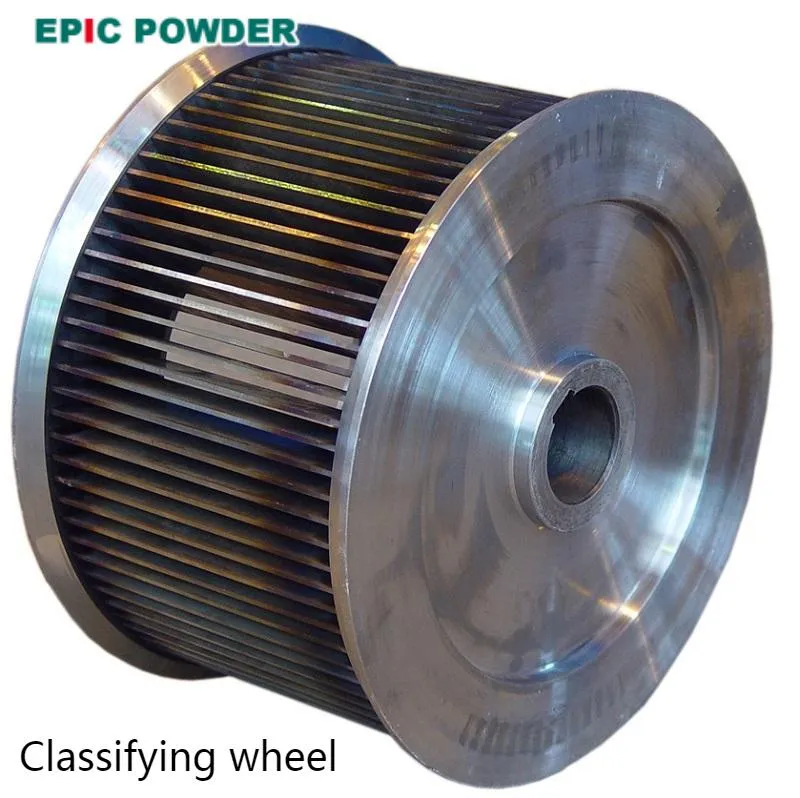
Typical applications
Building materials: Classification of cement clinker, fly ash, and talcum powder, etc.
Chemical industry: Classification of resin particles and calcium carbonate (stainless steel material is required for corrosion resistance).
Environmental protection field: Classification of waste incineration ash (surface wear-resistant treatment is required).
Reference maintenance cycle of classifying wheel
| Maintenance Project | Daily | Monthly | Yearly |
| Surface cleaning | √ | ||
| Blade inspection | √ | ||
| Bolt tightening | √ | ||
| Lubrication replenishment | √ | Complete replacement | |
| Dynamic balancing test | √ | √ | |
| Wear detection | √ | √ |
Konklusion
In summary, classifying wheels made from different materials exhibit distinct characteristics and specific application scenarios. In practical applications, the material choice of classifying wheel needs to comprehensively consider material properties, classification requirements, and cost. We believe that, in future, development of composite materials will further balance performance and cost, driving the intelligentization and high efficiency of air classifier mill.

Qingdao Epic Powder Machinery Co., Ltd. er et udstyr til behandling af pulver fabrikant with rich experience and technical accumulation.
Our products include:
Mills: ball mill, air classifier mill, roller mill, jet mill, impact mill, etc.
Classifiers: 5 types of air classifiers, HTS, ITC, CTC, MBS and TDC.
Modification equipment: pin-mill modifier, three-rotor-mill modifier and turbo-mill modifier.
Related auxiliary equipment: control cabinet, bag filter, suction fan, etc.
Én kunde, ét design
Air classifier mill is one of our products. It includes 5 series: MJW-W, MJW-L, MJW-A, MJL-W og Lab luftklassificeringsmølle. According to different customer needs and material characteristics, we will choose different solutions for you, a one-stop solution from equipment selection, solution design to installation and commissioning, and after-sales service.
If you need air classifier mill or other powder processing equipment, please kontakte vores personale directly, we are at your service at any time.
We sincerely hope that our equipment can contribute to the development of your enterprises.
